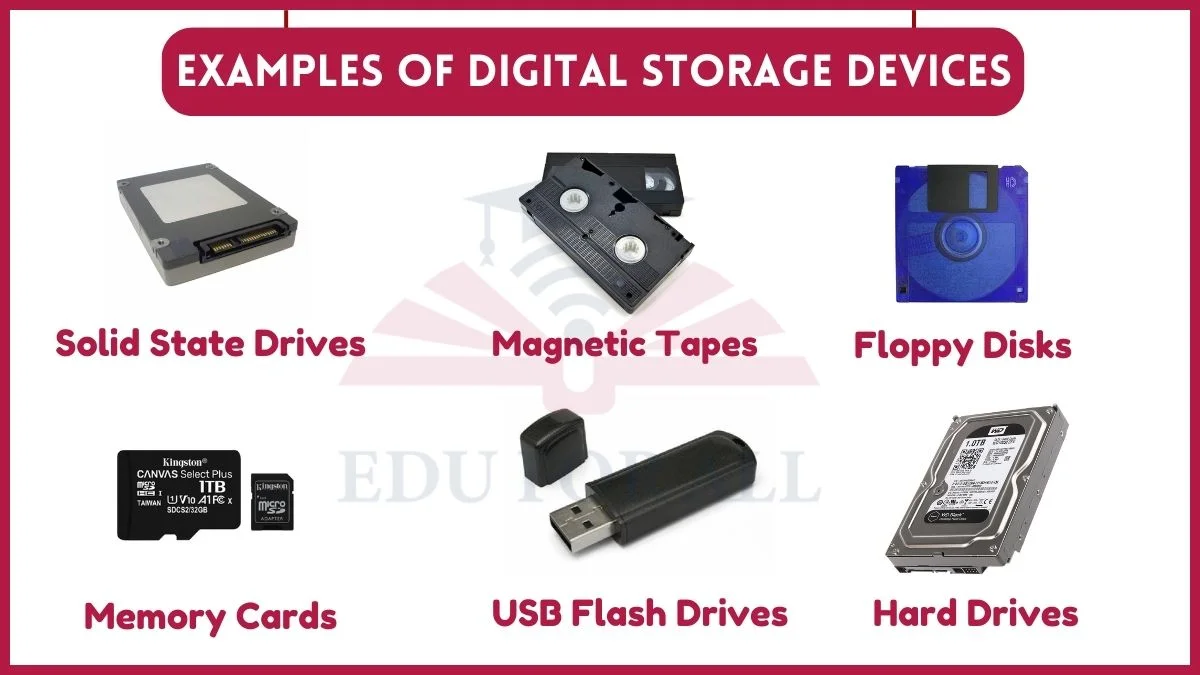Scanners are devices that can capture images, text, or barcodes and convert them into a digital format that can be used on a computer. Examples of scanners include Document Scanners, Sheetfed Scanners, 3D Scanners, Barcode Scanners, and more.
Examples of Scanners
Here are some examples of scanners:
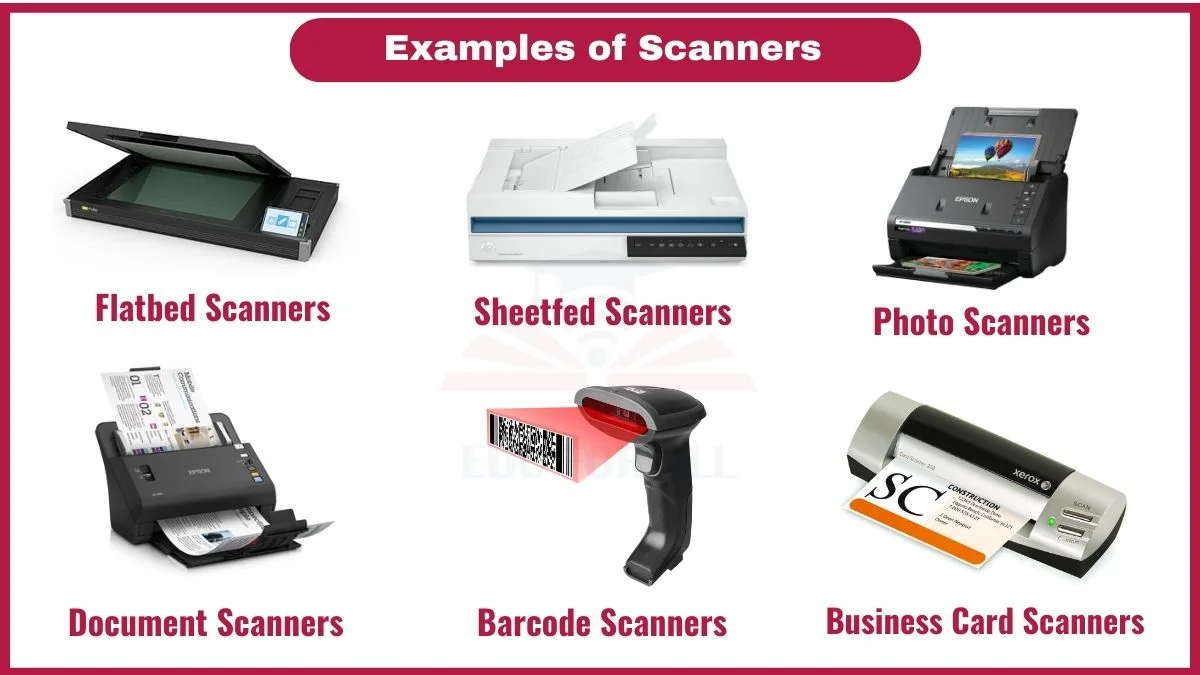
1. Flatbed Scanners
A flatbed scanner is the most common type of scanner. It works like a photocopier, with the document needing to be scanned and placed face-down on a glass surface.
An image sensor moves underneath the glass to capture the document. Flatbed scanners are versatile for scanning documents, photos, magazines, or books. They are available for both home and office use.
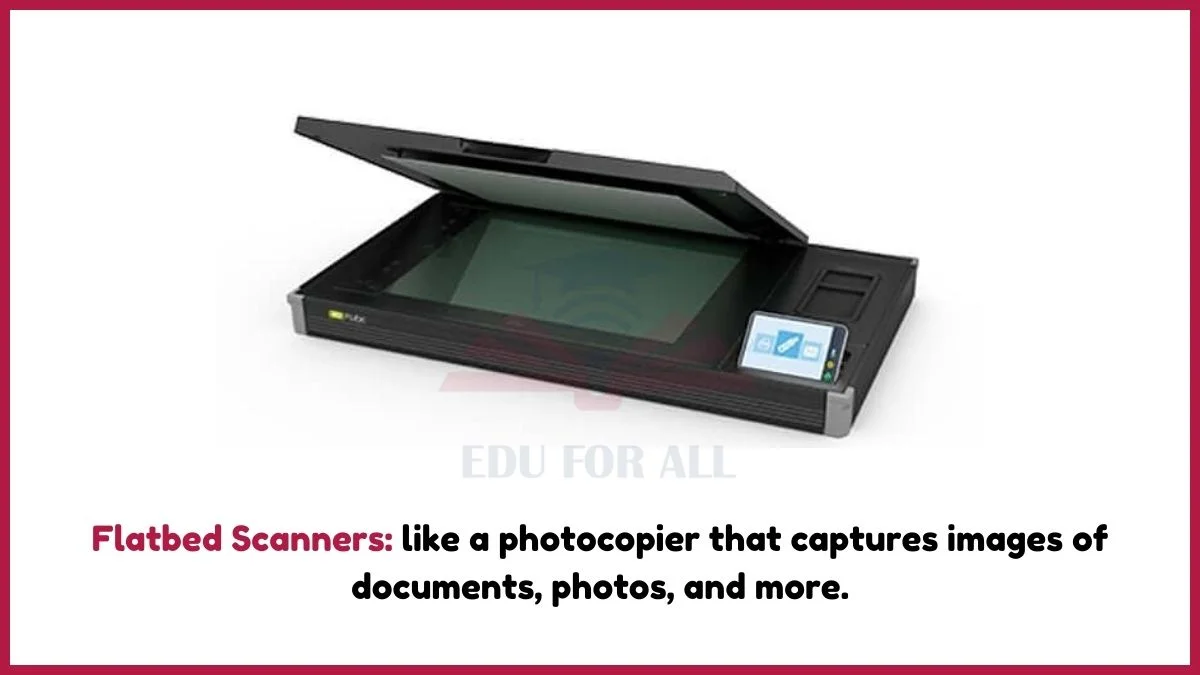
2. Sheetfed Scanners
Sheetfed scanners are designed for scanning multiple pages quickly. They work by pulling in a stack of papers or documents through a feed slot. The image sensor scans each sheet as it moves through the scanner. Sheetfed scanners can scan stacks of up to 50 pages automatically, making them useful for digitizing large documents.
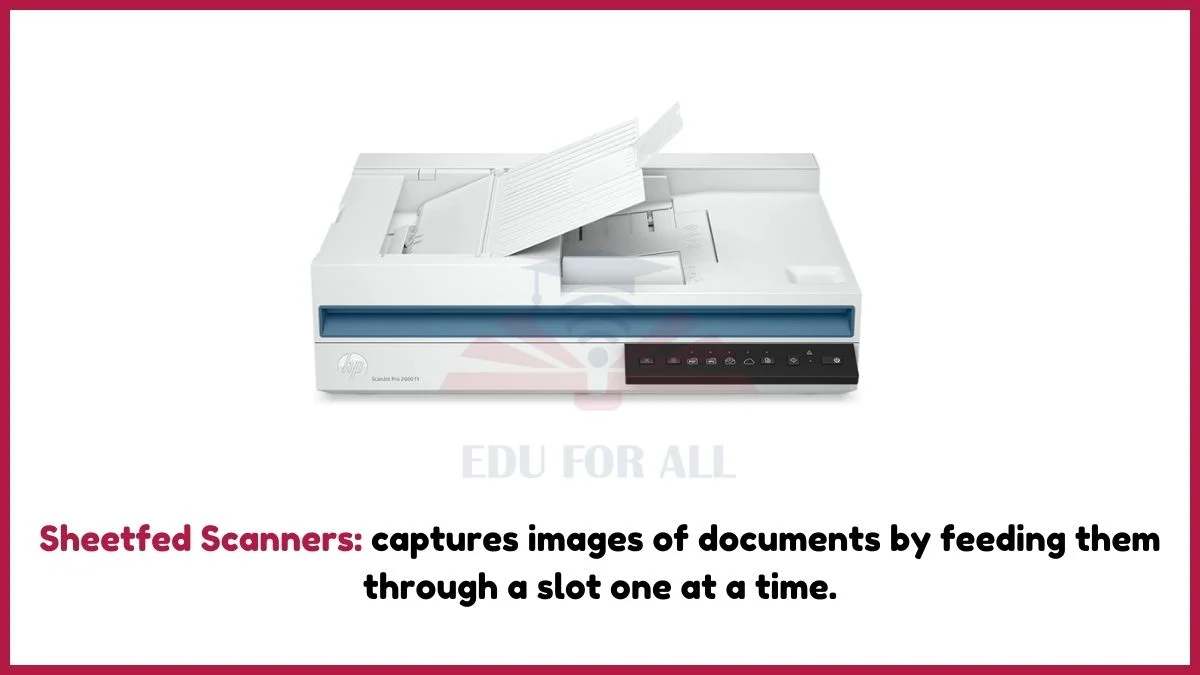
3. Photo Scanners
Photo scanners are optimized for scanning photographic prints. They are designed to capture the full dynamic range of light in a photo. Many also feature color correction and editing tools built-in for restoring old photographs. Photo scanners aimed at consumers typically have capacities suited for scanning small prints.

4. Document Scanners
Document scanners are focused on digitizing office documents like letters, contracts, forms, and receipts. They prioritize capturing sharp, easily readable text rather than photographic color accuracy. Many feature automated document feeding (ADF) for quick batch digitization and software for optical character recognition (OCR).
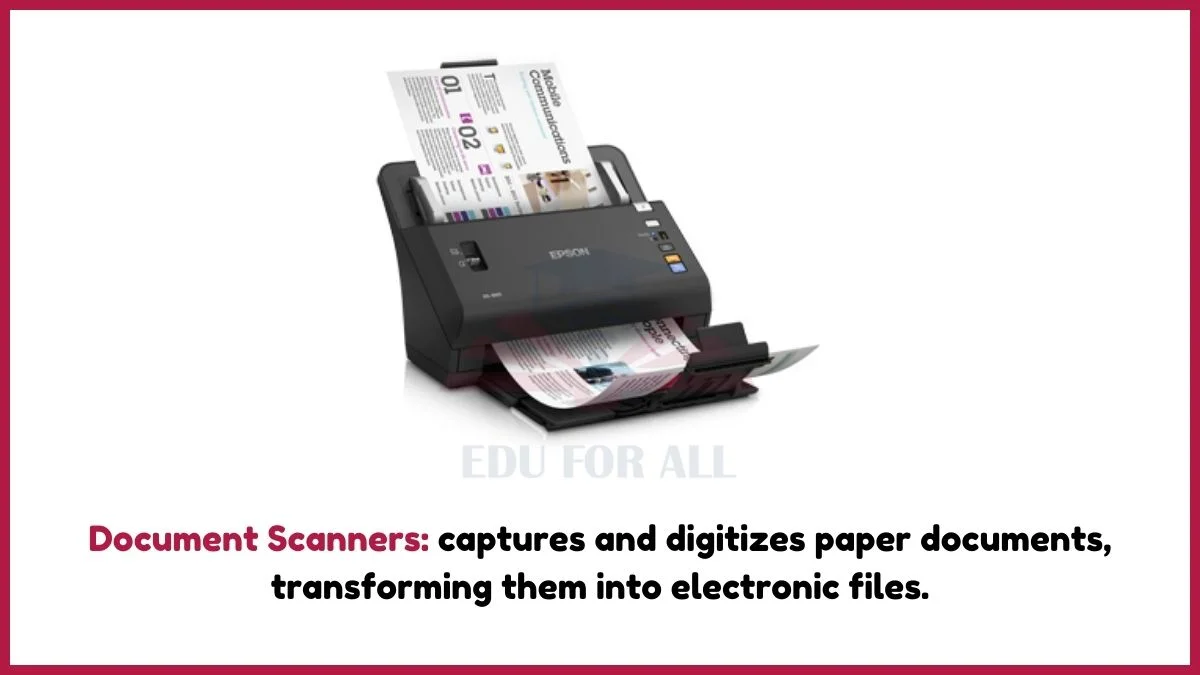
5. Barcode Scanners
Barcode scanners use light sensors to read the distinct barcode pattern on items in retail, warehouses, and libraries that identify them. The barcode information is then sent to a connected computer or point-of-sale system. Barcode scanners speed up checkout and inventory processes by avoiding manual data entry.
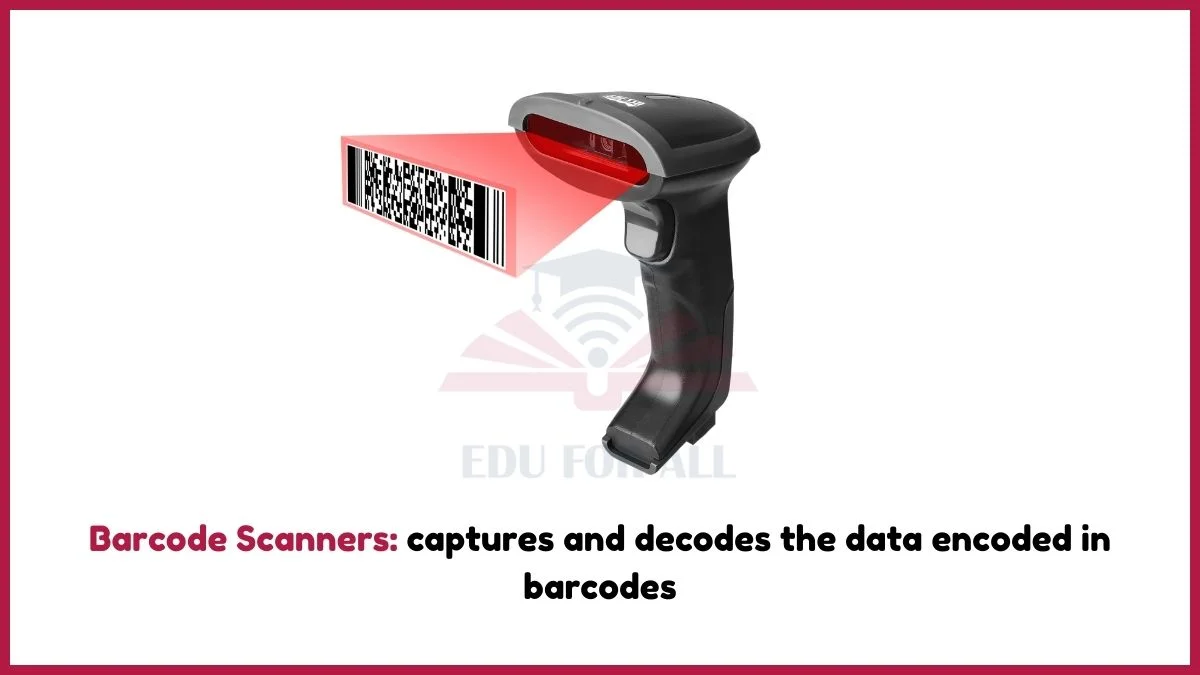
6. Business Card Scanners
Business card scanners offer specialized functionality to easily capture the text and images on business cards. They often feature integrated OCR software so the name, company, phone number, and other info gets extracted automatically into a contacts list or database like Excel.

7. 3D Scanners
A 3D scanner captures detailed geometric data on the shape and measurements of a real-world object. The sensors work like radar, using timed light pulses to map surfaces. The captured 3D model makes it possible to design around existing objects or 3D print replicas. Common applications are in industrial design, archaeology, and videogame asset creation.
8. Drum Scanners
Drum scanners use photomultiplier tube sensors and laser technology to achieve exceptional color accuracy and resolution when digitizing images, including finer details like film grain. This specialized technology excels at scanning high-quality reproductions for publishing, photographic archiving, and artwork documentation.
9. Magnetic Stripe Readers
Magnetic stripe readers or magstripe readers scan the magnetic stripe on the back of credit cards, gift cards, hotel room keys, and more to read the data encoded. The stripe data includes details like card numbers and expiration dates. Magstripe readers play an important role in secure point-of-sale (POS) terminals and self-service kiosks.
10. CCD Scanners
Charge-coupled device (CCD) image sensors use photosensitive cells that convert light into electrical signals to capture extremely high-resolution images. While more expensive, CCD scanners offer exceptional quality for archival scanning and reproducing fine details in areas like museums, microfilm digitization, and specialized technical imaging.



